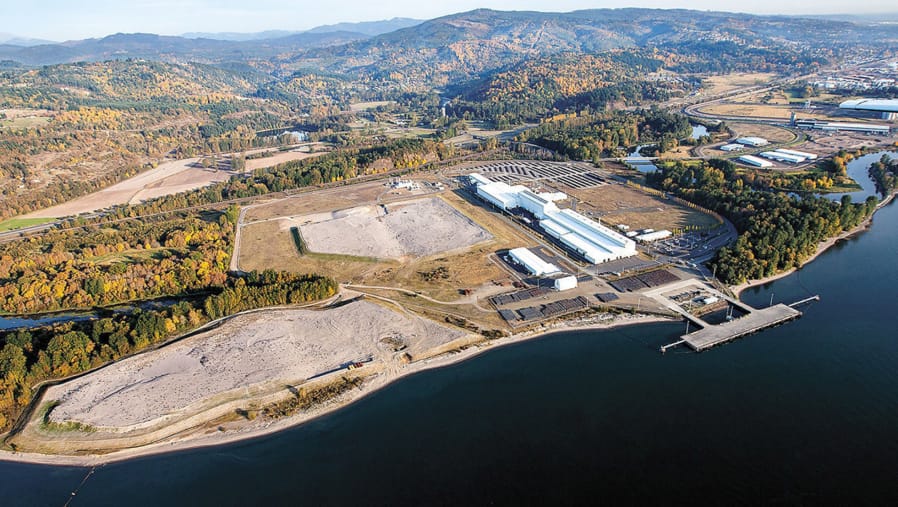LONGVIEW — A coalition of groups opposing Northwest Innovation Works’ proposed methanol plant in Kalama is now calling for an entirely new environmental review of the $1.8 billion project.
The coalition’s suggested scope for the new study would almost certainly introduce lengthy delays for the proposal, which already is headed for a second environmental impact statement.
The project hit a snag in September when the state Shoreline Hearings Board invalidated two key permits, siding with a coalition that included Columbia Riverkeeper, the Sierra Club and the Center for Biological Diversity. In its ruling, the board agreed that the project’s first environmental impact statement failed to account for total greenhouse gas emissions related to the project, such as those from the fracking process used to mine natural gas.
As lead agencies for the environmental review, the port and Cowlitz County are appealing the board’s decision.
But in an effort to avoid further delays, Northwest Innovation is proceeding with a “lifecycle analysis” that includes a study of emissions stemming from natural gas mining, methanol production and the product’s export to Asia.
The study’s proposed scope also will include an analysis of whether the plant will displace dirtier coal-to-methanol facilities in China. Northwest Innovation maintains that its project will reduce greenhouse gas emissions compared to projected levels.
A 30-day public comment period on the scope of the “supplemental” EIS closed on March 1. The environmental coalition, led by Columbia Riverkeeper, submitted more than 11,000 comments in opposition. It was not immediately clear Wednesday how many comments were sent in support of the project.
“It is the job of the … responsible officials for the port and county to receive and evaluate these comments and many others,” said Kent Caputo, Northwest Innovation’s chief commercial officer and general counsel, in a statement to The Daily News on Wednesday.
“Those officials determine the scope and nature of an already robust environmental review and, as in the past, we defer to their judgment.”
It’s up to the Port of Kalama and Cowlitz County planning officials to incorporate the coalition’s suggestions into the new environmental study. Port officials were unavailable for comment Wednesday, and county officials declined comment.
The coalition of environmental groups is arguing that a new study limited to greenhouse gas emissions “is inappropriate as a matter of law and policy.”
According to the coalition, the project’s new environmental review should:
• Analyze whether the plant’s natural gas demands would reach or exceed the supply capacity of the Pacific Northwest’s gas infrastructure — and whether the plant would trigger new regional pipeline construction. (The plant would convert natural gas into methanol, and it would use enough gas to supply 1.6 million homes annually.)
• Analyze and disclose the increase in gas wells, natural gas production, and fracking activity related to the project.
• Include a range of estimates for methane leakage rates at fracking sites and along transport pipelines.
• Clarify whether the methanol produced at the Kalama plant would be used to make plastics or used as an additive for liquid fuel.
• Feature a robust analysis of whether and how Northwest Innovation’s methanol would alter the production and consumption of coal-to-methanol-based plastics in China.
• Explain how much plastic would be generated using methanol from the plant, and how much of that plastic could eventually make its way into the ocean.
• Discuss how emissions that result from burning methanol as fuel would impact climate change.
• Describe how the plant’s emissions would affect Washington’s ability to meet its statutory goals for reducing climate pollution.
• Describe all “direct, indirect and cumulative impacts” of the project.
Miles Johnson, an attorney with Columbia Riverkeeper, said in an interview Wednesday that his group is pleased that proposed scope of the new review includes a lifecycle analysis of greenhouse gas emissions.
“We think that’s a good thing and required by SEPA, and we look forward to seeing that analysis,” he said. “But the devil is always in the details as to what those analyses look like.”
It’s not possible to challenge the scope of an environmental impact statement outside of an agency’s permitting decision, Johnson said.
The project has also drawn a mixed reaction from city councils on opposite sides of the Columbia River.
Prescott City Council President Frank Oliver sent a letter on Feb. 22 expressing councilmembers’ concern about the plant. The methanol project would be located 937 yards away from the city, which once was next to the now-decommissioned Trojan Nuclear Power Plant.
“Should an accident or an unfortunate disaster occur … all of Prescott and surrounding areas would wiped off the map,” he wrote.
A day later, all five of Kalama’s City Council members signed a letter reaffirming the council’s support for the port after Mayor Mike Reuter — who was elected last fall on an anti-methanol platform — expressed personal opposition to the project at a Feb. 19 community meeting hosted by Columbia Riverkeeper.
“The City Council wants it to be clear that his statement was not the official policy or position of the City of Kalama. The City Council fully supports the Port of Kalama’s economic development projects within the region,” the council members wrote.
The project’s supporters note that the plant would create 190 permanent jobs and 1,000 construction jobs, according to its original EIS. Critics argue the first EIS also shows the plant would produce the equivalent emissions of 260,000 passenger cars, boosting the state’s annual greenhouse emissions by 1.28 percent.



